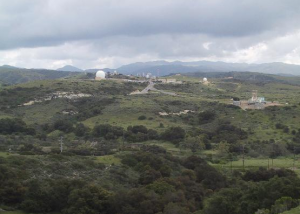Those were the days….
Why do things seem to be more difficult to accomplish now than in the “good ol’ days” of Apollo.

An item caught my eye this morning as I scanned the space news of the day. A famous aerospace facility, the TRW Capistrano Test Site in southern California is closing. The closure of a space facility is hardly news. In fact, such a headline could have been written any time over the last 20 years or so. But it got me thinking about the nature of the spaceflight business and why things seem to be more difficult to accomplish now than in the “good ol’ days” of Apollo.
I have argued elsewhere that for many reasons, the Apollo program is not a good template for new space endeavors. Yet the idea that we have somehow lost something – something vital – since the days of Apollo persists in the minds of many space advocates. They’re not wrong. Among other things, we have lost a significant and critical component of space exploration: a robust aerospace industrial infrastructure.
It was inevitable that with the end of the Cold War in the 1990’s, many high-technology companies with lucrative defense contracts would either re-focus their attention elsewhere (such as consumer products), be bought out by other larger companies, or simply go out of business. This was and is a critical issue for national security. Many of these companies made parts and subsystems vital to the proper functioning of national defense systems. I always thought that the real motivation of the Space Exploration Initiative of President George H. W. Bush in 1989 was to give this industrial base something difficult yet achievable to do, keeping them occupied with challenging work until they were needed for future defense production.
President Bush never articulated this reason for SEI and with his defeat in the election of 1992, it was easy to write off the SEI as a failed political “stunt” (a criticism I’ve never understood as no President has ever reaped any political gains from making a major space declaration and that includes John Kennedy, who was in serious political trouble in the south in 1963, even after shoveling tons of cash into Dixie from the Apollo program.) In the post-Cold War era, the fight against terrorism soon emerged as a national defense priority, but this war was different and largely fought with existing space assets and technologies.
A few isolated projects in the 1990’s were able to draw on the legacy technical base of the Cold War. The 1994 Clementine mission was a test of very low mass, low power sensors originally developed for defense, but applied to space exploration. Some of those instruments were manufactured by small companies that no longer exist. Over the course of the last five years, as we built the Mini-SAR instrument now orbiting the Moon on Chandrayaan-1, our progress was impeded because many of the parts and subsystems we needed were unavailable or only available from a small pool of vendors.
There were only two major bids to NASA in 2006 for the development of the new Orion spacecraft, the replacement for the Space Shuttle now under development. Contrast this with the 12 bids NASA considered for the Apollo spacecraft in 1961. The difference is not simply a consequence of corporations teaming with each other; joint proposals were common during the Apollo program. The difference is that there are few aerospace companies left. Many of the small high-technology companies and the highly skilled workforce that made up our industrial base during the Cold War are gone or have been absorbed into the body of Boeing-LockMart-Grumman.
The net effect of all this is less innovation and resourcefulness in the execution of space projects. As they age, the tendency is for organizations to continue to do business in a certain way because “that’s they way we’ve always done it.” Institutions become more risk averse and less enterprising with time. It’s no surprise to read headlines about new delays in the Orion CEV program and how our return to the Moon will take longer and cost more because we have come to expect that from our space program.
It’s not surprising. Just depressing.
/https://tf-cmsv2-smithsonianmag-media.s3.amazonaws.com/accounts/headshot/blog_headshot_spudis-300x300.jpg)
/https://tf-cmsv2-smithsonianmag-media.s3.amazonaws.com/accounts/headshot/blog_headshot_spudis-300x300.jpg)